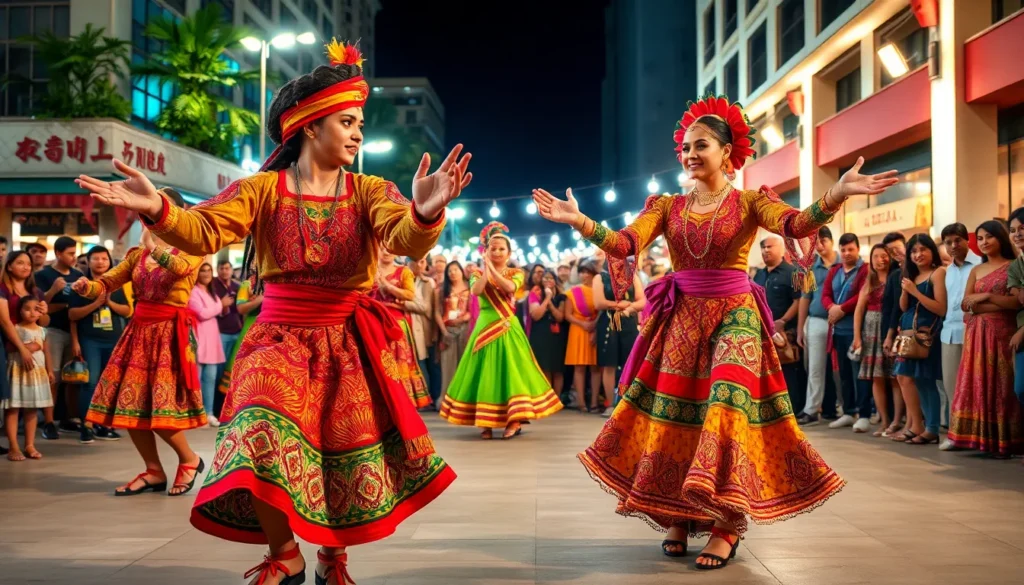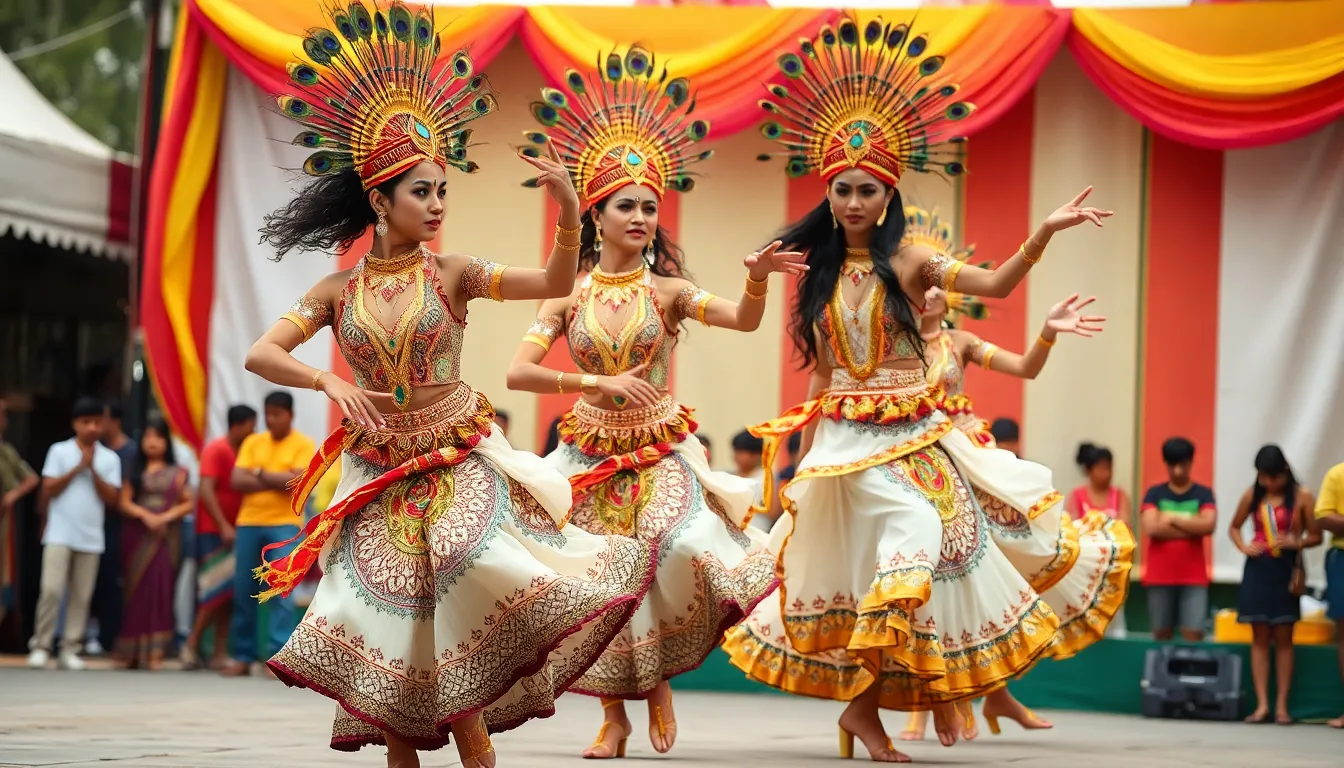Table of Contents
ToggleRasnkada, a traditional cultural celebration deeply rooted in South Asian heritage, combines vibrant performances, colorful costumes, and rhythmic music into a spectacular display of artistry. This centuries-old practice has evolved from royal court entertainment to a beloved community event that brings people together across generations.
Today’s rasnkada celebrations maintain their cultural significance while embracing modern influences. The intricate dance movements tell ancient stories through carefully choreographed sequences, with performers dedicating years to mastering the techniques. As interest in cultural preservation grows worldwide, rasnkada has gained international recognition for its unique aesthetic and historical importance.
What Is Rasnkada and Its Origin
Rasnkada represents a traditional South Asian ceremonial art form that combines dance, music, and theatrical elements into a vibrant cultural expression. Dating back to the 16th century, this performance tradition originated in the royal courts of Sri Lanka’s Kandyan kingdom, where it served as entertainment for royalty during significant celebrations and religious ceremonies.
The term “Rasnkada” derives from two ancient Sanskrit words: “Rasn,” meaning emotion or sentiment, and “Kada,” referring to storytelling or performance. Court musicians and dancers developed this art form under royal patronage, creating a sophisticated system of movements that portrayed mythological tales, historical events, and spiritual concepts.
Archaeological evidence from ancient temple carvings in Anuradhapura and Polonnaruwa suggests that early forms of Rasnkada-like performances existed even before its formal recognition. These carvings, dating to the 8th century, depict dancers in poses remarkably similar to modern Rasnkada positions, indicating the art form’s deep historical roots.
The colonial period (1505-1948) marked a significant transition for Rasnkada, as it shifted from exclusive royal entertainment to a community-based cultural practice. When the Kandyan kingdom fell to British rule in 1815, court performers dispersed to villages, adapting their art for common audiences and ensuring its survival through generations of family transmission.
Today’s Rasnkada reflects this rich historical journey, maintaining core traditional elements while embracing regional variations across different South Asian communities. Each region has developed distinct styles, costumes, and musical accompaniments, creating a diverse tapestry of related traditions united by shared historical origins.
Key Features of Rasnkada
Rasnkada’s enduring popularity stems from its distinctive characteristics that have been preserved through generations while evolving with contemporary influences. These features collectively create the immersive experience that makes rasnkada a beloved cultural tradition.
Traditional Elements
Traditional rasnkada performances showcase intricate rhythmic footwork synchronized with dynamic drum patterns, particularly from the geta beraya (double-headed drum). Dancers wear elaborate costumes featuring vibrant colors, metallic embroidery, and symbolic accessories like the headdress (sirasa patiya) adorned with peacock feathers representing divine protection. Hand gestures (mudras) communicate specific meanings, with over 50 distinct positions telling stories without words. Facial expressions (abhinaya) convey nine primary emotions including joy, fear, and compassion. Performances typically follow a structured format beginning with an invocation to deities (magul beraya), followed by pure dance sequences (tala), narrative portions (vannam), and concluding with an energetic finale (uddekki).
Modern Adaptations
Contemporary rasnkada has embraced numerous innovations while maintaining its cultural essence. Modern lighting techniques enhance visual storytelling, with LED technology creating dramatic effects during nighttime performances. Digital music elements now complement traditional instruments, introducing subtle electronic beats and recorded tracks that appeal to younger audiences. Performance venues have expanded beyond temples and community centers to international stages, cultural festivals, and digital platforms through viral social media videos. Costume designers incorporate lightweight, breathable fabrics with traditional designs, making extended performances more comfortable for dancers. Thematic adaptations address current social issues and contemporary narratives, making rasnkada relevant to modern audiences while preserving its traditional storytelling format. Collaborative performances increasingly feature fusion elements, blending rasnkada with ballet, contemporary dance, and other global dance forms.
Cultural Significance of Rasnkada
Rasnkada stands as a vital cultural cornerstone in South Asian heritage, transcending mere entertainment to become a profound expression of identity and heritage. Its cultural impact extends across multiple dimensions of society, from sacred ceremonies to everyday community interactions.
Ceremonial Importance
Rasnkada performances form an essential component of major life ceremonies and religious festivals throughout South Asia. During weddings, dancers perform specific rasnkada sequences that symbolize blessings for fertility and prosperity, creating auspicious energy for newlyweds. Religious festivals such as Vesak and Poson in Sri Lanka feature elaborate rasnkada displays honoring Buddhist traditions, with performances occurring at temple grounds where dancers enact stories from religious texts. The harvest season brings specialized rasnkada routines that express gratitude to nature deities, incorporating agricultural symbols and movements mimicking farming activities. Government officials often commission rasnkada performances for state ceremonies and diplomatic events, positioning the dance form as a cultural ambassador. The ceremonial costumes, including the traditional “ves” headdress worn by male dancers, carry specific symbolic meanings related to cosmic forces and natural elements, enhancing the spiritual dimension of performances.
Community Bonding
Rasnkada functions as a powerful social adhesive, strengthening community ties across generations and social boundaries. Weekly practice sessions in community halls transform into important social gatherings where families connect and share local news. Village festivals feature competitive rasnkada performances between neighboring communities, fostering friendly rivalry that ultimately strengthens regional identity and cooperation. Intergenerational learning occurs naturally as senior dancers mentor younger performers, preserving cultural knowledge while creating meaningful cross-age relationships. During times of community hardship, special rasnkada performances raise funds for families in need, demonstrating the dance form’s role in collective support systems. The collaborative nature of preparing for major rasnkada events—from costume making to stage decoration—creates shared experiences that reinforce community solidarity. Dance schools dedicated to rasnkada serve as important cultural hubs where community values and traditions are actively transmitted to new generations, ensuring cultural continuity amid rapid social change.
How to Experience Rasnkada
Experiencing rasnkada firsthand offers a deeper appreciation of this vibrant South Asian cultural tradition. Whether as a spectator or participant, engaging with rasnkada connects individuals to centuries of artistic heritage and communal celebration.
Participating in Events
Attending rasnkada performances provides an immersive cultural experience accessible to both locals and visitors. Major cultural festivals in Sri Lanka such as Esala Perahera in Kandy and Vesak celebrations feature spectacular rasnkada showcases, typically occurring between May and August. Urban cultural centers in Colombo, Kandy, and Galle host regular performances year-round, with tickets ranging from $5-25 depending on venue and event prestige. Community celebrations in villages often offer free or donation-based opportunities to witness authentic rasnkada in its traditional setting.
For travelers, cultural tourism packages frequently include rasnkada experiences, combining performances with historical site visits and hands-on workshops. These curated experiences typically cost $30-100 per person. International cultural festivals in major cities worldwide increasingly feature rasnkada troupes, bringing this tradition to global audiences through events like Edinburgh Festival Fringe and Singapore’s Esplanade cultural programs.
For the most authentic experience, visitors should arrive early to secure good viewing positions, dress respectfully in modest attire, and refrain from flash photography which may distract performers. Many events welcome audience participation during specific segments, creating memorable interactive moments.
Learning the Basics
Novices can explore rasnkada through structured learning opportunities designed for various skill levels. Dedicated rasnkada schools in Sri Lanka such as Chitrasena Dance Academy in Colombo and Kandy Dance Academy offer programs for beginners, with short courses starting at $50-100 for 5-10 sessions. These foundational classes teach the five basic foot positions, elementary hand gestures (mudras), and proper posture alignment.
Community centers and cultural institutions frequently offer weekend workshops led by master practitioners, providing accessible entry points for curious learners. These 2-3 hour sessions typically cost $15-30 and cover fundamental movements and cultural context. For international learners, online platforms like Guru Digital and CulturalConnect feature video tutorials and live virtual classes with certified instructors, ranging from $10-25 per session.
Self-guided learning resources include instructional books like “The Essence of Rasnkada” by Tharanga Dissanayake and YouTube channels dedicated to step-by-step tutorials. Beginners should practice basic foot patterns for 15-20 minutes daily, focusing on rhythm maintenance before advancing to complex sequences. Comfortable, breathable clothing and flat, flexible shoes or bare feet work best for practice sessions.
Regular attendance at performances complements formal learning, allowing students to observe nuances in expression and technical execution that enhance their own practice. Many schools welcome observers to advanced classes, providing valuable learning opportunities before committing to intensive training.
The Global Spread of Rasnkada
Rasnkada has transcended its South Asian origins to become an international cultural phenomenon embraced by diverse communities worldwide. Initially spreading through South Asian diaspora communities in the 1950s and 1960s, rasnkada found new homes in countries like the United Kingdom, Canada, Australia, and the United States where immigrant families maintained cultural connections to their homeland.
Cultural exchange programs initiated in the 1970s significantly accelerated rasnkada’s global recognition. Universities in Europe and North America began incorporating rasnkada into their performing arts curricula, establishing 37 dedicated academic programs by 2020. These educational initiatives have trained over 5,000 non-South Asian performers in authentic rasnkada techniques.
Social media platforms have dramatically amplified rasnkada’s international presence since 2010. YouTube channels dedicated to rasnkada performances regularly attract millions of views, with the most popular rasnkada tutorial video accumulating 8.3 million views. TikTok and Instagram have further popularized abbreviated rasnkada movements, inspiring fusion performances that blend traditional elements with contemporary dance styles.
Major international festivals now regularly feature rasnkada performances. The Edinburgh Festival Fringe, Smithsonian Folklife Festival, and UNESCO Cultural Heritage events have showcased traditional rasnkada troupes, exposing the art form to global audiences. Notable rasnkada performers like Anura Medagama and Samanthi Jayawardena have conducted 85 international tours since 2000, performing in 42 countries across six continents.
Cultural adaptation has been key to rasnkada’s global appeal. International rasnkada schools have modified teaching methods to accommodate different learning styles while preserving core traditions. In Japan, 28 rasnkada schools have developed a hybrid approach incorporating elements of local Noh theater traditions with classical rasnkada movements, creating a unique cultural bridge between Eastern art forms.
Despite its growing popularity, rasnkada faces challenges in maintaining authenticity in its international spread. Cultural preservation societies have established certification programs for instructors and developed standardized curricula that balance innovation with tradition. These efforts have certified 315 international rasnkada instructors committed to teaching authentic techniques while respecting the art form’s cultural origins.
Preserving Rasnkada for Future Generations
Rasnkada preservation efforts combine traditional methods with modern approaches to ensure this cultural treasure endures for future generations. Cultural institutions, community organizations, and government bodies have implemented comprehensive strategies that address documentation, education, and innovation while maintaining authenticity.
Documentation and Archiving
Digital preservation projects capture rasnkada performances in high-definition video and audio formats, creating permanent records of traditional techniques and styles. The National Archive of Traditional Arts has cataloged over 300 historical rasnkada performances dating back to the 1940s, making these resources accessible through online databases and mobile applications. Oral history projects document the experiences of elder practitioners, preserving their knowledge of movements, music, and cultural contexts that might otherwise be lost.
Museum collections showcase historical costumes, instruments, and artifacts related to rasnkada, with institutions like the National Cultural Museum housing over 500 preserved items including ceremonial masks, traditional drums, and vintage costume pieces from various regional styles.
Educational Initiatives
Formal education programs integrate rasnkada into school curricula throughout South Asia, introducing children to its cultural significance from an early age. The Traditional Arts Education Initiative operates in 450 schools across Sri Lanka, reaching approximately 75,000 students annually. Specialized academies offer structured training programs with certified instructors who teach authentic techniques while mentoring the next generation of performers.
Community workshops connect experienced practitioners with newcomers in accessible, informal settings. The Rasnkada Heritage Network hosts monthly workshops in 28 communities, attracting participants across age groups and skill levels. Scholarship programs support talented youth from disadvantaged backgrounds, providing financial assistance for training, costumes, and performance opportunities.
Adaptation and Innovation
Technology integration enhances preservation efforts through mobile applications that provide step-by-step tutorials of traditional movements and online platforms that connect practitioners worldwide. The “Digital Rasnkada” platform launched in 2021 has attracted 125,000 registered users who access instructional videos, historical information, and virtual community events.
Responsible modernization efforts maintain core elements while adapting to contemporary contexts. The Contemporary Rasnkada Collective develops performances that address current social issues while adhering to traditional forms, creating relevant cultural expressions that resonate with younger audiences.
Cross-cultural collaborations introduce rasnkada to new audiences through fusion performances with ballet, contemporary dance, and other world dance traditions. The International Dance Exchange Program has facilitated 45 collaborative projects across 18 countries since 2015, expanding rasnkada’s global footprint.
Policy and Advocacy
UNESCO recognition of rasnkada as Intangible Cultural Heritage in 2018 provided international validation and support for preservation efforts. This designation unlocked funding for conservation projects and raised awareness about rasnkada’s cultural significance.
Government initiatives include national cultural policies that allocate resources for rasnkada preservation, with the Ministry of Cultural Affairs providing annual grants totaling $1.2 million for training programs, performance venues, and documentation projects.
Community-led advocacy groups like the Rasnkada Preservation Society work to protect traditional knowledge from commercial exploitation and ensure practitioners receive fair recognition for their contributions. These organizations have successfully lobbied for intellectual property protections that acknowledge the collective ownership of traditional dance elements.
Conclusion
Rasnkada stands as a living testament to South Asia’s rich cultural heritage. From its royal origins to its contemporary global presence this art form continues to evolve while maintaining its core traditions. The intricate dance movements storytelling elements and vibrant costumes create an immersive experience that transcends generations.
As rasnkada gains international recognition its future looks promising with preservation efforts technology integration and educational initiatives ensuring its longevity. Whether experienced through cultural festivals formal performances or learning programs rasnkada offers a meaningful connection to ancient traditions.
This dynamic art form’s ability to adapt while honoring its roots makes it more than just a performance—it’s a cultural bridge linking past present and future communities across the world.




